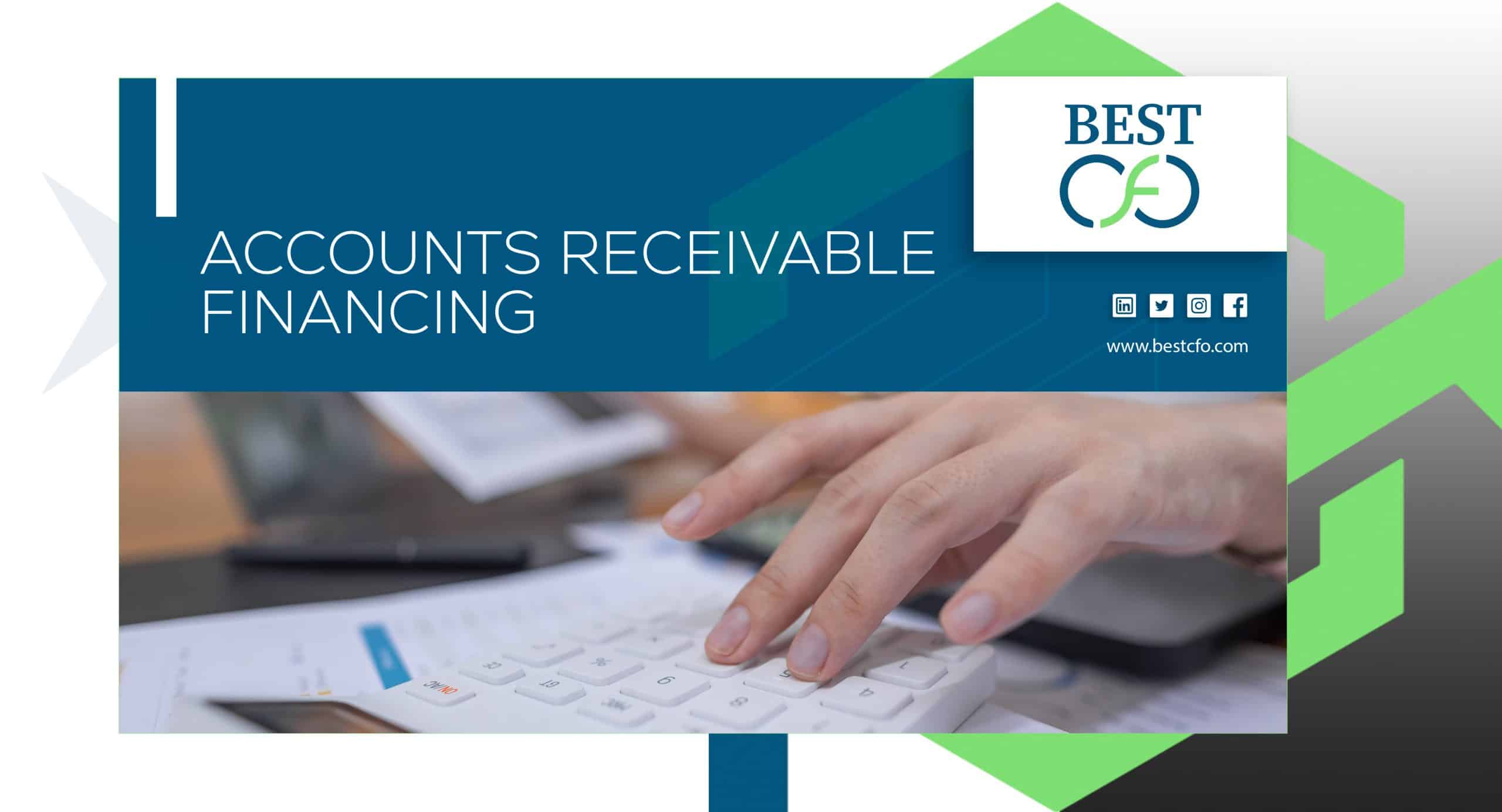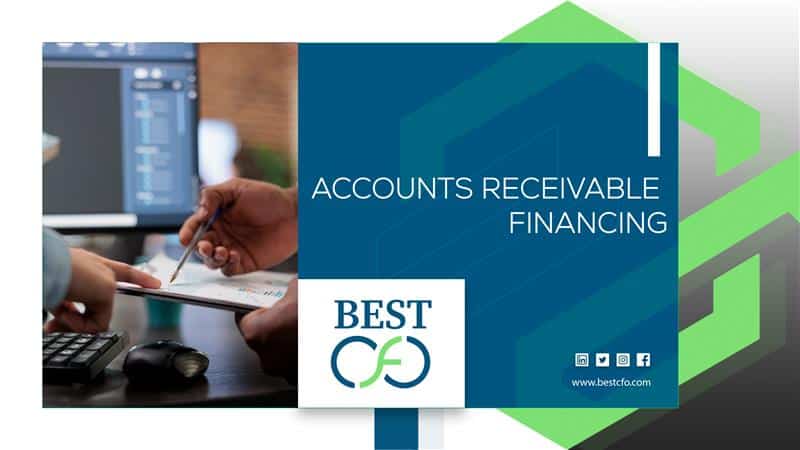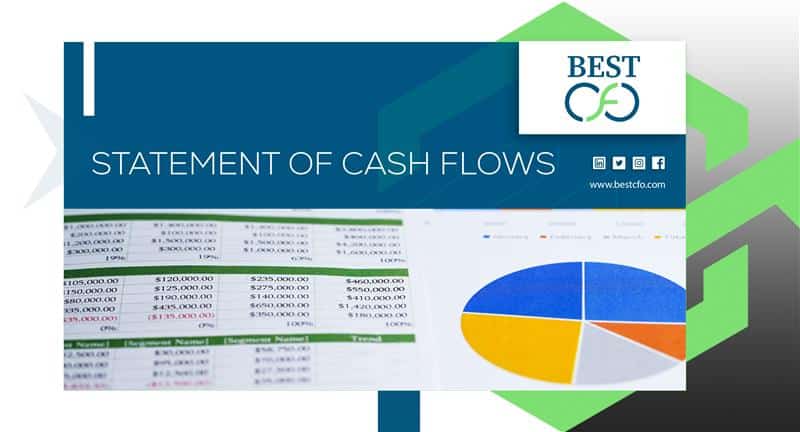
| Getting your Trinity Audio player ready... |
Accounts Receivable Financing: Pros and Cons You Need to Know
When your business needs cash fast, waiting 30, 60, or even 90 days for customers to pay invoices just doesn’t cut it. That’s where Accounts Receivable Financing (also known as AR financing) comes in—a handy tool that helps keep the money flowing when your cash flow feels stuck.
If you’ve ever felt the pressure of meeting payroll, buying inventory, or just keeping the lights on while customers drag their feet, this blog is for you. We’re diving into what AR financing is, how it works, and whether it’s the right move for your business. You’ll get the pros, the cons, and tips to help you choose the best provider.
What Is Accounts Receivable Financing?
Let’s break it down. Accounts receivable financing is a way for businesses to get paid now for invoices they expect to be paid later. Instead of waiting for customers to pay, you sell those invoices to a lender or financing company. In return, they give you a big chunk of that invoice amount upfront—usually around 70% to 90%.
Main Types of AR Financing
- Factoring (Finance): You sell the invoices to a third party (called a factor). The factor collects payments directly from your customers. Two types are:
– Recourse factoring: You’re still on the hook if the customer doesn’t pay.
– Non-recourse factoring: The lender takes on the risk of non-payment.
- Asset-Based Lending (ABL): Your invoices act as collateral for a business loan. You stay in charge of collecting payments. Good option if you want to keep control.
How It Works (Step-by-Step)
- Sell Goods or Services: You deliver a product or service and issue an invoice to your customer.
- Partner with a Financing Company: Choose a lender who offers AR financing.
- Get Paid Now: The lender gives you a large percentage of the invoice upfront.
- Repayment: Either the customer pays the lender directly (factoring),
or you pay the lender back after receiving the customer’s payment (ABL).
Common Industries That Use It
- Manufacturing
- Staffing agencies
- Transportation
- Wholesale and distribution
- Service industries with long billing cycles
If your business works mostly with other businesses (B2B) and you often wait weeks for payments, accounts receivable financing could be a game changer.
Pros of Accounts Receivable Financing
Here are some pros of accounts receivable financing:
Improved Cash Flow
This is the biggest reason businesses love AR financing. You get paid right away—not weeks or months later. That cash helps cover:
- Payroll
- Inventory purchases
- Rent or utilities
- Other day-to-day expenses
No Extra Collateral Needed
Your invoices are the only asset you need. Unlike traditional loans, you don’t have to risk your property, car, or savings.
This makes AR financing great for companies without large assets on the balance sheet.
Faster Than Bank Loans
- No long waits
- Fewer hoops to jump through
- Some lenders fund you in just 24–72 hours
Plus, AR financing focuses more on your customers’ credit than your own credit score, which helps if your business has a shaky credit history.
Flexible and Scalable
The more your sales grow, the more invoices you have—and that means more funding. No need to renegotiate terms every time you grow.
Unlike a line of credit, this option grows with you.
Collections Can Be Outsourced
Some factoring companies handle collections, which means less admin work for you. That’s especially helpful if you don’t have a big accounting team.
Helps Businesses with Poor Credit
If your customers are strong, reliable payers, lenders are more likely to say yes—even if your credit history isn’t perfect.
Cons of Accounts Receivable Financing
The following are cons of AR financing:
Higher Costs Than Traditional Loans
Fees can add up. Lenders might charge:
- 1% to 5% per invoice
- Interest rates on top
- Extra fees for services
That’s more expensive than a typical bank loan or line of credit—especially over time.
Risk to Customer Relationships
If your customers suddenly hear from a third-party collector, they might get confused—or worse, annoyed.
Not every customer likes dealing with someone other than the business they signed a contract with.

Not All Invoices Qualify
Lenders may reject:
- Invoices from customers with bad payment history
- Invoices that are too old
- Too many invoices from one customer (concentration risk)
You’ll need to keep your customer base healthy.
Hidden Fees Can Creep In
Some contracts include:
- Application fees
- Early termination charges
- Monthly service costs
Always read the fine print and ask about the annual percentage rate and other charges up front.
You’re Still on the Hook (Sometimes)
With recourse factoring, if your customer doesn’t pay—you might have to repay the money to the lender.
This adds a layer of risk you need to understand clearly.
Less Control Over Your Receivables
In some cases, the lender might dictate payment terms or how you deal with your customers. That’s a shift in control not every business is comfortable with.
Accounts Receivable Financing vs. Other Financing Options
Type | Pros | Cons |
Traditional Loans | Lower cost, long terms | Harder to qualify, slow process |
Line of Credit | Flexible borrowing | Needs strong credit and financials |
Merchant Cash Advance | Quick cash, based on sales | Very high costs |
Crowdfunding/Equity | No repayment needed | Dilutes business ownership |
If you’re unsure, speak with a financial adviser or research with platforms like NerdWallet or Better Business Bureau to compare options.
Who Should Use AR Financing?
Best Fit For:
- B2B companies with long payment terms
- Businesses growing fast but short on cash
- Firms with solid customers but weak credit
Not Ideal For:
- B2C (Business-to-Consumer) companies
- Companies with low profit margins (fees could eat your income)
- Businesses with irregular or small invoices
How to Choose the Right AR Financing Provider
Picking the right partner matters. Here’s what to look for:
- Reputation: Check reviews and the Better Business Bureau
- Fee Structure: Make sure it’s clear and upfront
- Recourse vs. Non-Recourse: Know the risk you’re taking
- Customer Service: Fast responses and helpful answers
- Flexibility: Can they scale with your business?
Questions to Ask
- Are there any hidden fees?
- How fast can I get funded?
- What are the terms if a customer doesn’t pay?
Conclusion
Accounts Receivable Financing can be a smart, flexible way to unlock the cash tied up in unpaid invoices. It’s especially useful for B2B businesses looking to grow, stay afloat during slow payment periods, or improve their working capital without taking on traditional debt.
But it’s not a one-size-fits-all solution. Understanding the cost, risks, and customer impact is key to making the right decision.
Looking to make better money moves for your business? Best CFO can help guide you through smart financing strategies that fit your goals.
FAQs
1: Is accounts receivable financing considered a loan?
Not always. Factoring is not a loan—it’s a sale of your invoices. But asset-based lending is a type of loan backed by accounts receivable.
2: Does AR financing affect my credit?
Usually, no. Since lenders focus on your customer’s credit, your own credit score may not take a hit.
Q3: Can startups use AR financing?
Yes—especially if they work with larger clients who pay on net-30 or net-60 terms. It’s a common option in financial services and service industries.
Q4: What’s the average cost of AR financing?
Costs vary. Expect 1–5% of the invoice value, plus other fees depending on the provider.
Q5: Is it legal in all states?
Yes, but make sure to understand the financial law and contracts before signing anything.
Related Posts
The 13-Week Cash Flow Model Every Business Needs
How to Improve Your Bad Debt to Equity Ratio: A Complete Guide If you’ve ever…
Debt Review vs Debt Consolidation – Key Differences Explained
CFO Automation: Why Finance Leaders Can’t Afford to Ignore It “60% of all finance tasks…
Cash Flow Insights: How a Business Line of Credit Keeps You Agile
How To Prepare Annual Budget For A Company: An Ultimate Guide When it comes to…
What Are The Sections of The Statement of Cash Flows?
Audit of Financial Statements: Guide for Business Owners Running a business means keeping track of…
 Demos
Demos  Colors
Colors  Docs
Docs  Support
Support 














